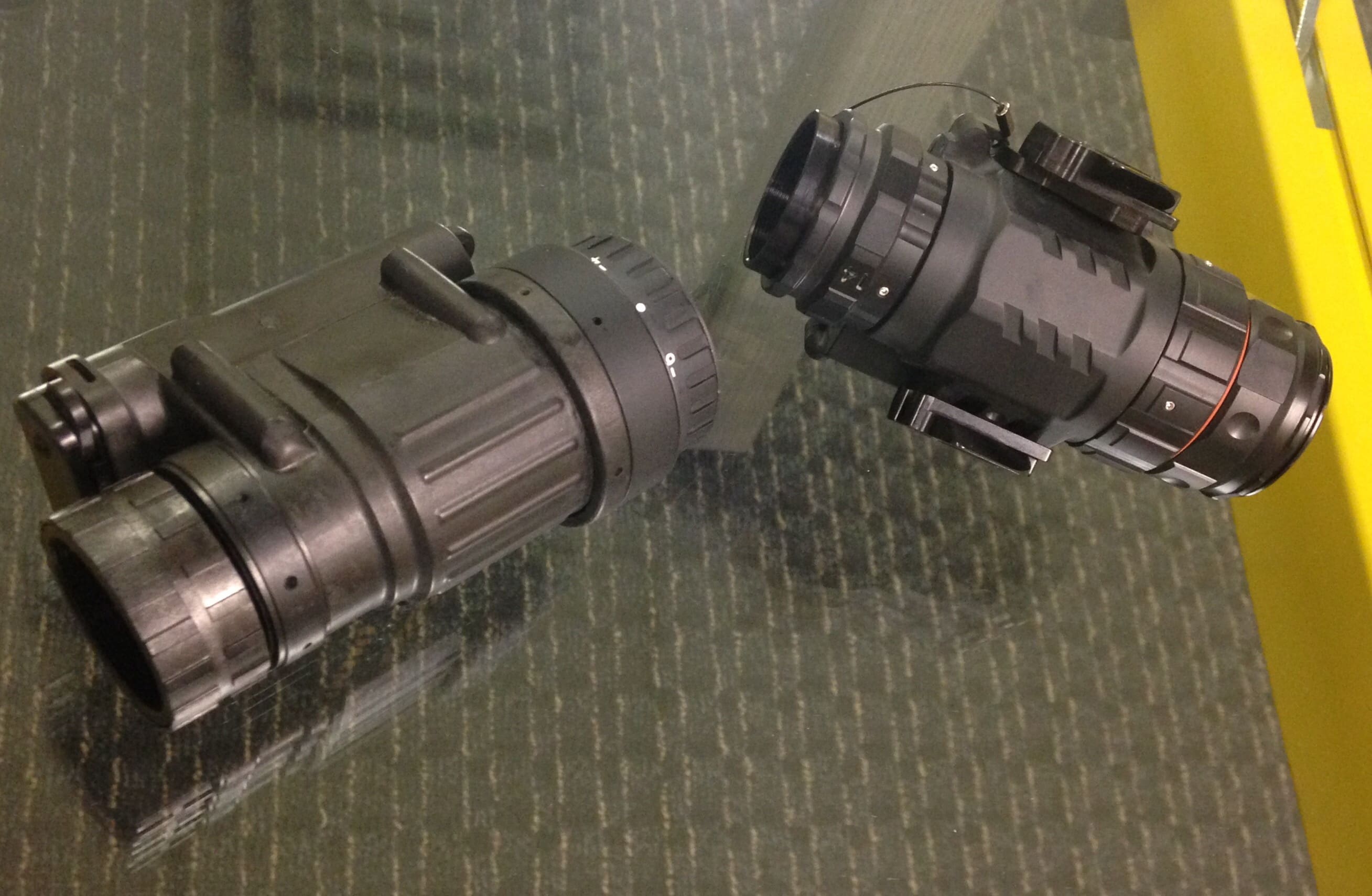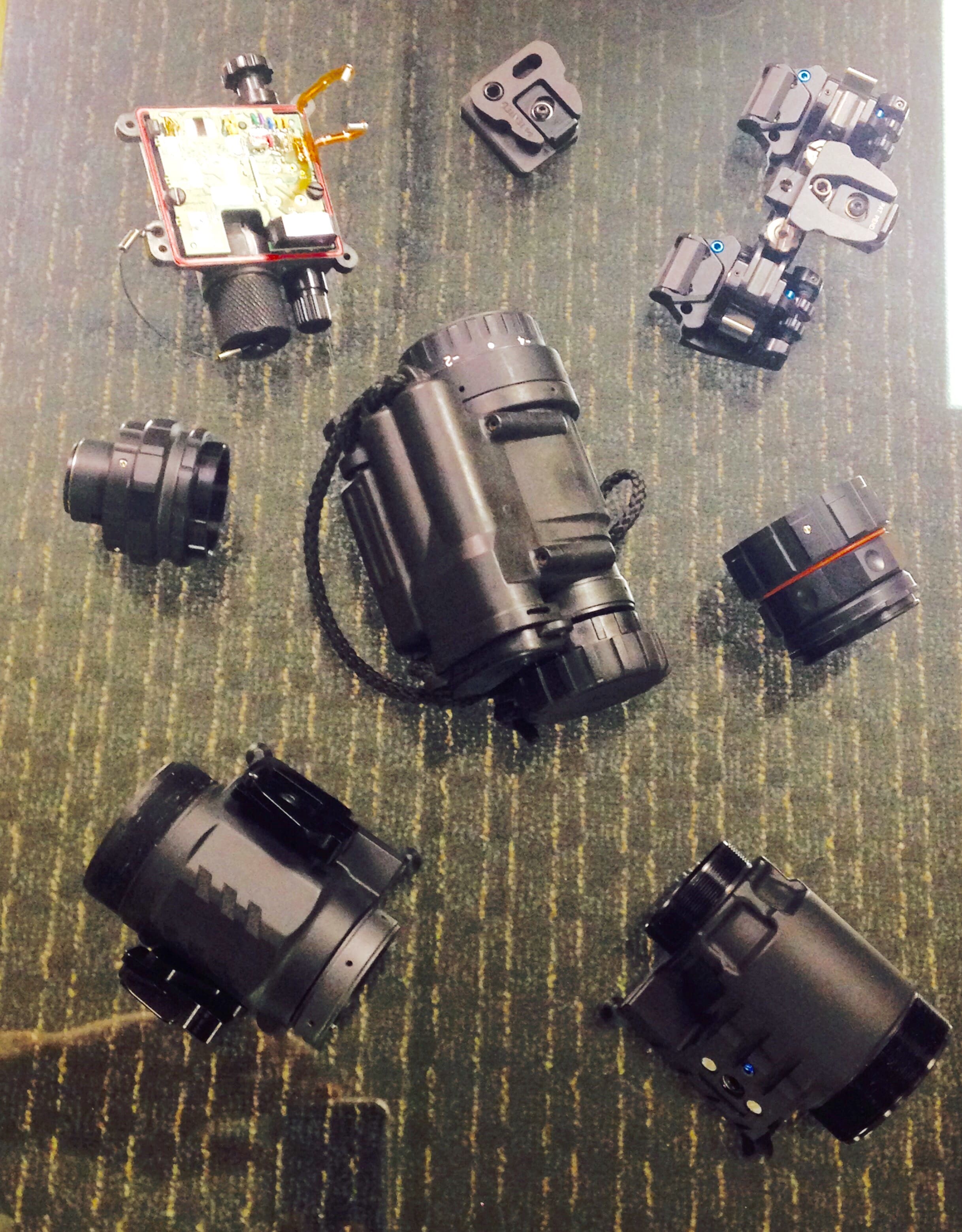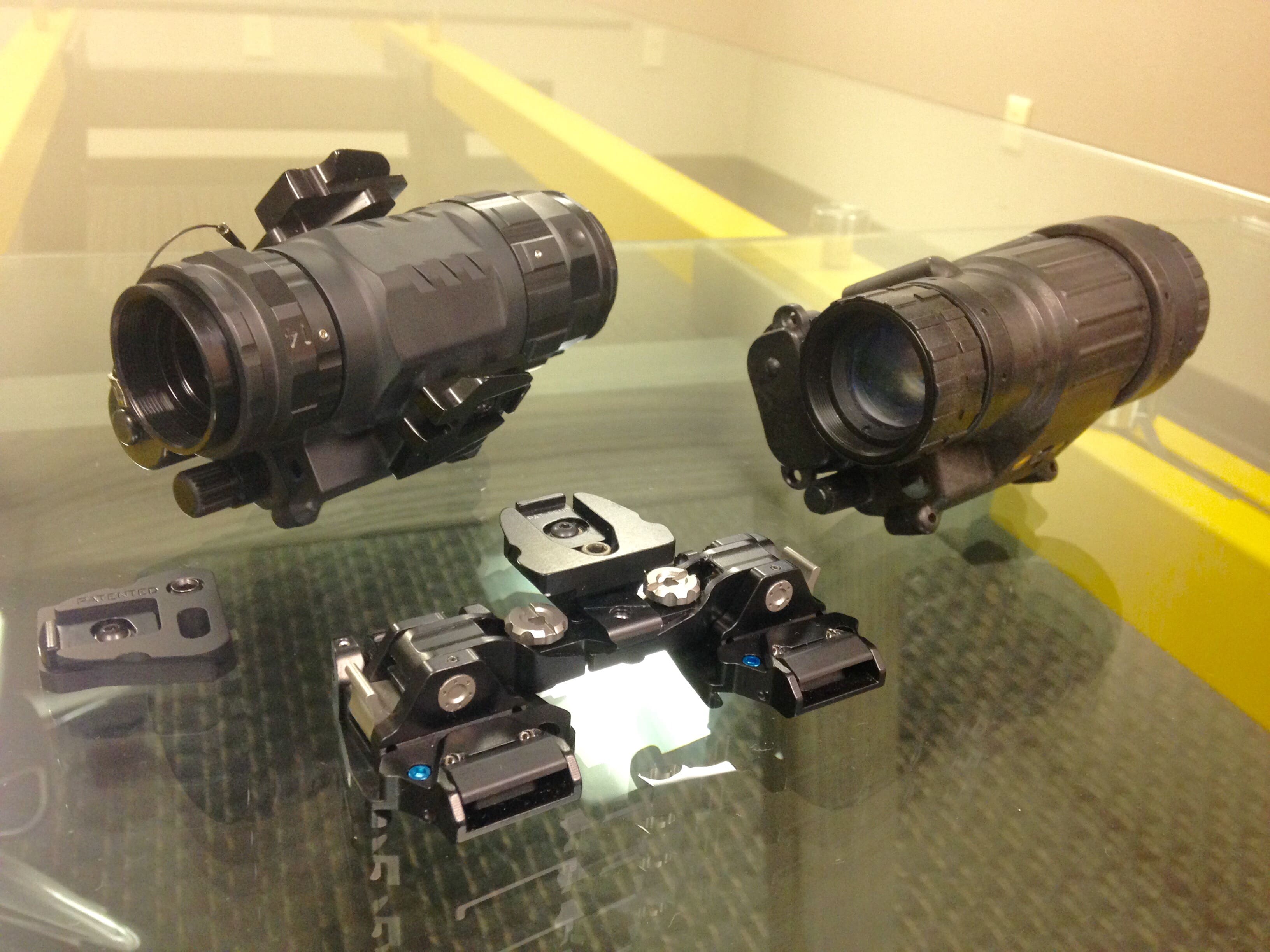This is the first installment in a series, being prepared with the assistance of DEP, the US subsidiary of Photonis, which will discuss how a standard AN/PVS-14 Night Vision Monocular can be upgraded to be not only lighter, but more powerful and more robust. Potential upgrades also integrate improved optic lenses as well as tubes, which not only work during the day, but also see out of band. By the time we are finished, you’ll see how you can upgrade the standard PVS-14 seen on the left of this photo to the PVS-14+ to the right, at a lower cost than purchasing yet another new NVG.
The last 15 years or so have brought significant and well needed improvements to the US service arsenal, in the form of both new as well as the improved versions of the various instruments of combat/survival.
Terminology such as multi-role, multi-mission and the modularity axiom are widely used, along with the “SWaP-C” acronym, nearly to the point of fault in many instances. Surface ships are in-fact now modular, as are sub-surface craft. Airframes are now in a sense modular (or common) as are the most individually focused articles such as weapons, holsters and of course personal issue items. Adding to the concept of modular or configurable is that of scalable. More so than modular, moving things around or taking components on/off, scaling allows one to use what’s most required without the potential grief of having too much, or too little, capability or functionality. This is the KISS-effect, in action.
One of the areas that has traditionally not been modularized is individual optics. Optics are a little tougher to contend with in a non-permanent format, particularly Electro-Optics (EO). EO, and even Day View Optics (DVO) have evolved to be very versatile, and multi-mission, adapted to applications in various environments. What they tend to lack is much of the aforementioned modularity, and surely scalability. More troublesome is repairability. If it breaks, it’s generally going home; a long way away. There is very little an armorer or operator can do locally for sick EO, or DVO devices. Fortunately, DVOs in most cases are very robust and usually affordable enough to replace in the AOR, that they provide a useful, affordable lifespan. Additionally, if push comes to shove, operators can rely on back up iron sights or an aiming light.
An exception, the individual night vision workhorse of the US military (and many others) is the legacy AN/PVS-14 Night Vision Monocular. An interesting study, this monocular was fielded just before the Global War On Terror began. As of today, it remains in service in many of the same organizations whom early adopted it, but without the upgrades, enhancements or modifications other equipment has received.
In the next few weeks the descriptives of modularity, scaling, multi-mission and near-to-user repair will be addressed to evaluate if the over 1,000,000 service PVS-14s can be improved and utilized in ways other systems have been over the last decade.





Just a little trick most don’t know about. Take the laser filter from in front of the ocular lens, unscrew the locking ring at the objective lens, screw in the laser filter in its place and now you have orange tinted nvgs. It’s easier on the eye and is a bit easier to see especially in low illum.